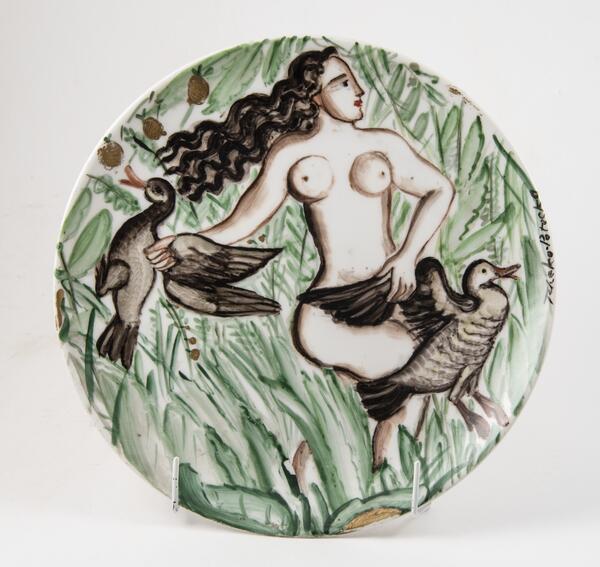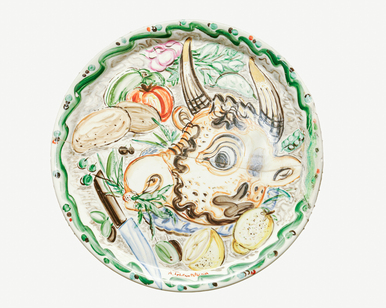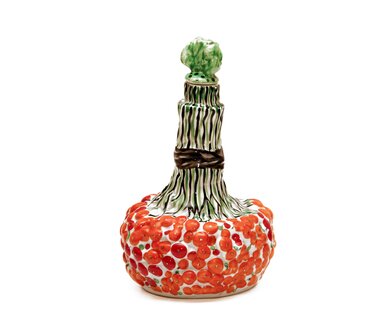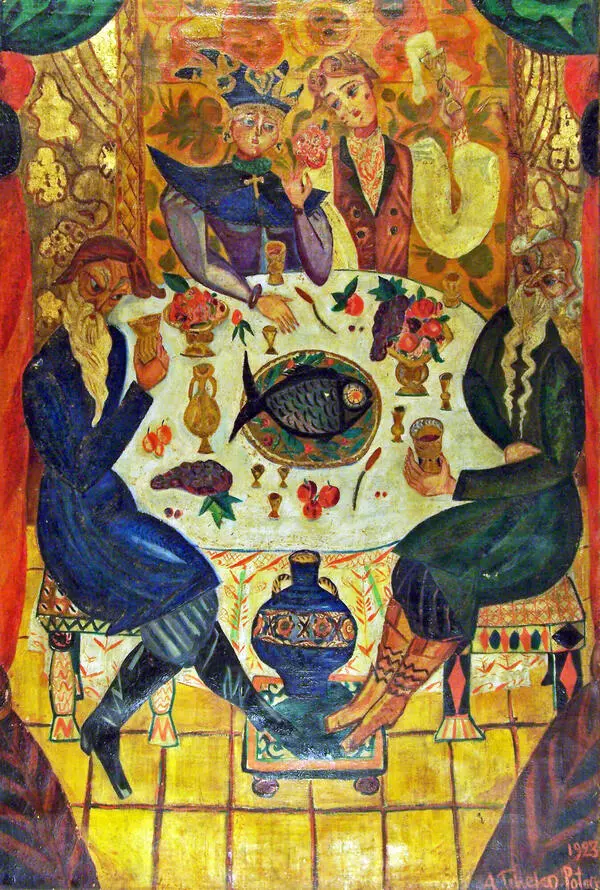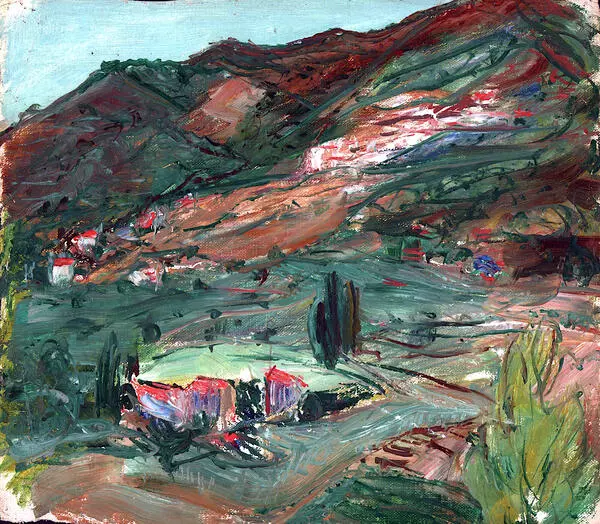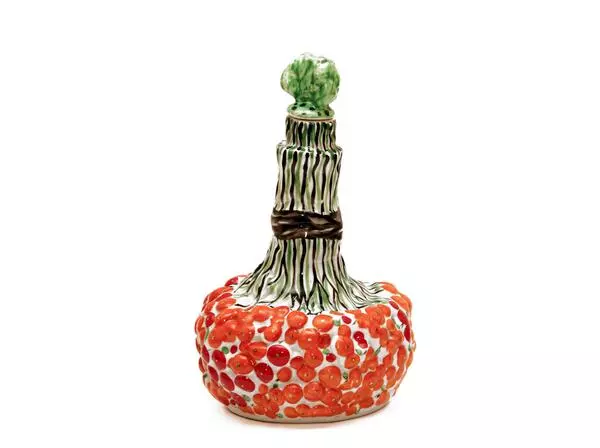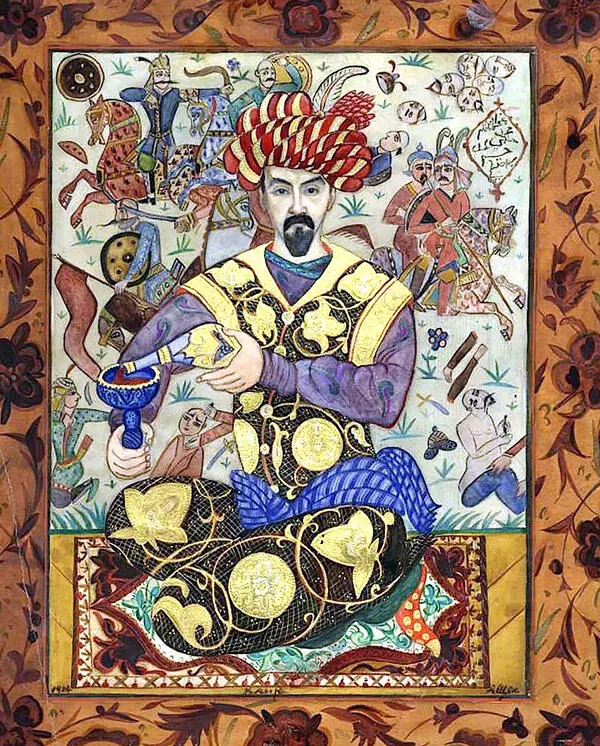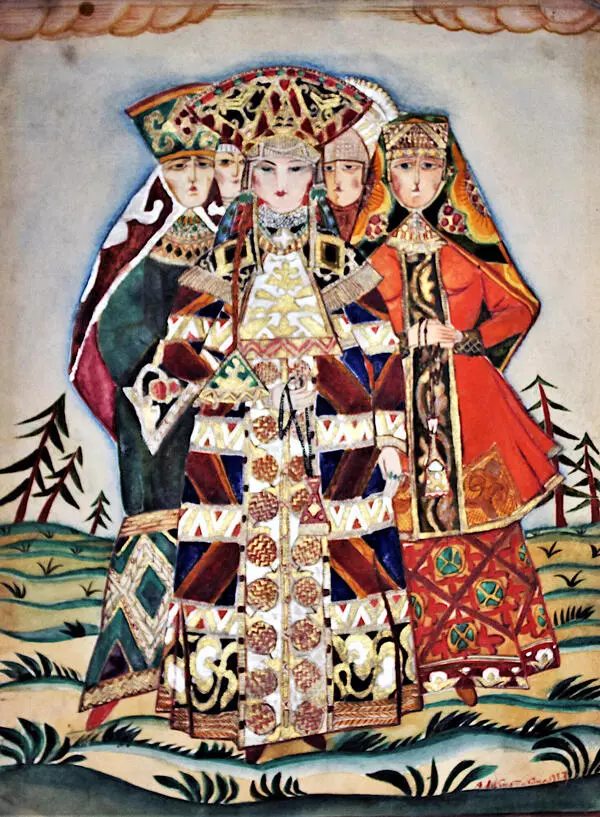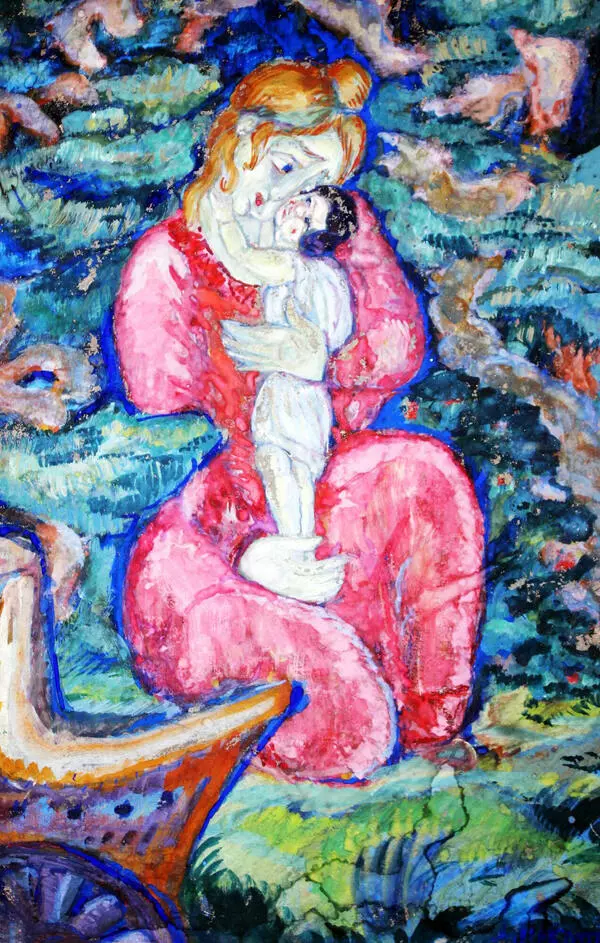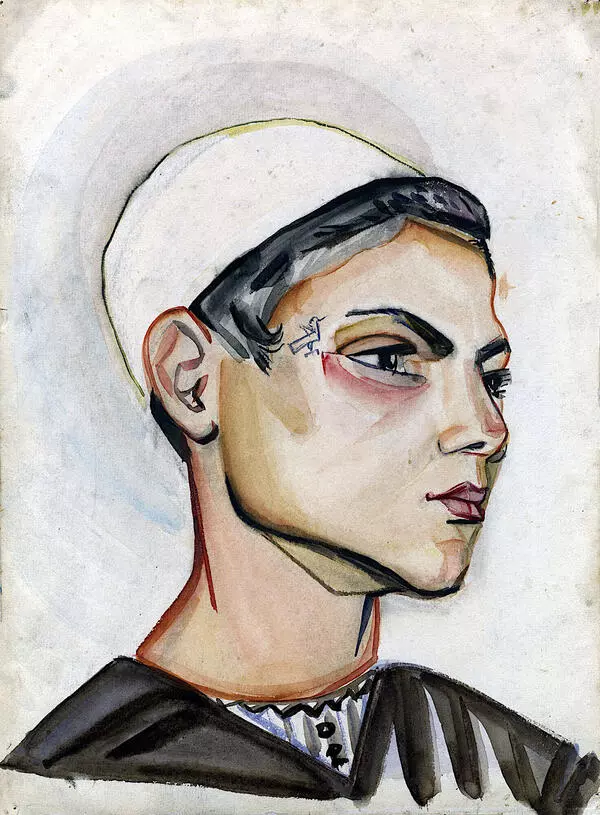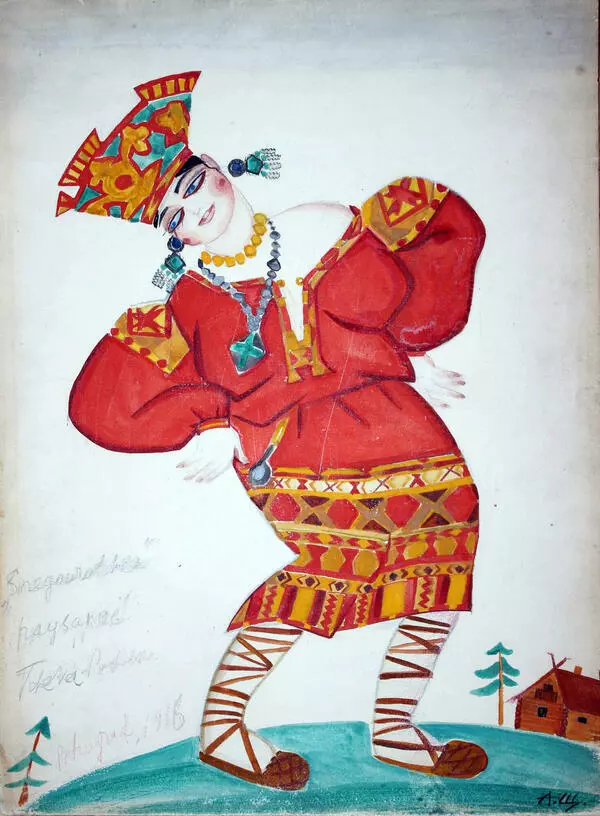The series of decorative plates called “Hunting” was a great success for Alexandra Vasilievna Shchekatikhina-Pototskaya, the wife of the Russian artist Ivan Yakovlevich Bilibin. She worked on it in the early 1930s.
The artist came up with the main idea and conjured up the preliminary design of the series back in 1924 in Egypt, when she was working on painting a large vase. She further developed the hunting theme and created several plates, the painting on each of them had its own unique plot. All scenes are painted against a background of dense green vegetation that entirely covers the surface and forms a continuous pattern. On these items, we see a naked hunter shooting a bow or blowing a horn, an Amazon frozen in a swift jump, running animals, or birds taking off the ground.
In these works, the artist again tries to capture a rapid action, using long wet brush strokes that help to convey the feeling of the swift movement of animals, birds and the human body. In painting the porcelain, the artist uses a dark contour that smoothly outlines the bodies of animals and people and seems to deter the image from flying away from the surface. A plethora of green shades enhances the effect of depth of the space in which her characters live.
Shchekatikhina’s painting is a bright, peculiar phenomenon and, when it comes to established traditions of artistic ceramics, a completely “indecent” one. The artist deliberately disregards the form of the items, defiantly ignores it, and sometimes enters into an open battle with it — she breaks, overturns, and completely violates the form. The angular spots of her painting, the swirling, animated brush strokes depict incredible and crippled people, they create naive and strange lines, irritate the viewer with their futuristic pretentiousness and still captivate with the boldness and fervor of color combinations. The artist, apparently, is not accustomed to any discipline or instruction; she must either be accepted as she is, or not allowed to paint porcelain at all. She does not draw, she does not paint, but decorates, and looking at her work, you see a mischievous talented decorator painting some fancy complex image on a signboard, who knows what for, solely in the name of the stark beauty of colors.
Shchekatikhina’s painting evokes mixed auditory associations: in it you can hear village songs, chastushki (short humorous verses), the sounds of hallooing and bickering. Brilliant, sharp colors, patterns, breaks, and distortion of perspective characterize her style. The cult of pure brush stroke introduced by Sergei Chekhonin was extensively used in her works.
The artist came up with the main idea and conjured up the preliminary design of the series back in 1924 in Egypt, when she was working on painting a large vase. She further developed the hunting theme and created several plates, the painting on each of them had its own unique plot. All scenes are painted against a background of dense green vegetation that entirely covers the surface and forms a continuous pattern. On these items, we see a naked hunter shooting a bow or blowing a horn, an Amazon frozen in a swift jump, running animals, or birds taking off the ground.
In these works, the artist again tries to capture a rapid action, using long wet brush strokes that help to convey the feeling of the swift movement of animals, birds and the human body. In painting the porcelain, the artist uses a dark contour that smoothly outlines the bodies of animals and people and seems to deter the image from flying away from the surface. A plethora of green shades enhances the effect of depth of the space in which her characters live.
Shchekatikhina’s painting is a bright, peculiar phenomenon and, when it comes to established traditions of artistic ceramics, a completely “indecent” one. The artist deliberately disregards the form of the items, defiantly ignores it, and sometimes enters into an open battle with it — she breaks, overturns, and completely violates the form. The angular spots of her painting, the swirling, animated brush strokes depict incredible and crippled people, they create naive and strange lines, irritate the viewer with their futuristic pretentiousness and still captivate with the boldness and fervor of color combinations. The artist, apparently, is not accustomed to any discipline or instruction; she must either be accepted as she is, or not allowed to paint porcelain at all. She does not draw, she does not paint, but decorates, and looking at her work, you see a mischievous talented decorator painting some fancy complex image on a signboard, who knows what for, solely in the name of the stark beauty of colors.
Shchekatikhina’s painting evokes mixed auditory associations: in it you can hear village songs, chastushki (short humorous verses), the sounds of hallooing and bickering. Brilliant, sharp colors, patterns, breaks, and distortion of perspective characterize her style. The cult of pure brush stroke introduced by Sergei Chekhonin was extensively used in her works.

